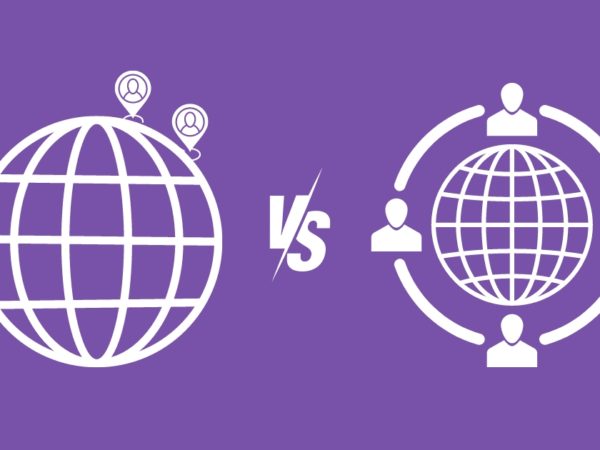Businesses have defined processes that make their organization run smoothly. Without these processes, your operations quickly become out of control.
Business rules guide your decision-making. Whether hiring employees, onboarding new team members, or deciding which partnerships or customers to take on, predetermined rules will ensure consistency and efficiency in your company’s workflow.
A business rules engine (BRE) can help automate processes and even predict outcomes depending on the conditions you input. In this guide, we’ll cover everything about a business rules engine so that you can implement this technique in your organization.
Importance of Business Automation
Nowadays, the business automation can be a complete game-changer for any company. It’s typically used as software that helps to perform repetitive tasks without the need for human control automatically.
Business automation enables you and your team to focus on other projects by automating routine, redundant tasks, which can, in turn, increase team efficiency, improve productivity, and help in scaling a business.
Furthermore, reducing tedious and repetitive tasks can help to save a lot on expenses such as:
- Improved processes reduce the total operations cost
- Defined automation rules help in decreasing expenses and increasing profit margins
- Decrease labor costs since most repetitive tasks can be given to BRE, such as eliminating your managers from having to do employee onboarding
And much more…
Automation Increases Business Productivity
The concept of automation has always been driven by the desire to increase productivity, reduce costs, and reduce human error simultaneously. Automating repetitive tasks can save a lot of time.
Our ability to “set and forget” certain aspects of the company gives us greater freedom to focus on other areas. So, consider working on the business rather than in it.
In addition, automation can lead to greater profitability for your organization. Automation lets you save money on labor hours by taking a hands-off approach to tasks like email drip campaigns, followup sequences, and monthly bill pay.
The right automation in your business can greatly contribute to a boost in productivity.
After your workflows and processes are in place, you can automate tasks to allow team members to focus on the important tasks that require hands-on attention. As a result of this increase in productivity, your business can always move forward, and nothing will fall behind.
What is a Business Rules Engine?
A Business Rule Engine (BRE) is a program-based software that helps to automate business processes and decisions using predefined logic to predict likely outcomes and improve an organization’s productivity. This helps to minimize errors, reduce costs, and increase efficiency.
Business rules are pre-determined instructions that guide decision-making.
Below we’ve listed a few examples to highlight how business rules engines can significantly improve operational efficiency using predefined strategies.
- 🏦 Financial Institutions: Banks and lenders use a BRE to verify whether a loan meets all requirements before the borrower is approved. Lenders must look at criteria such as outstanding debt, credit history, and income to determine which types of loans to approve.
- 🩺 Health Insurance Companies: Health insurance companies use business rules to decide if a new customer meets their eligibility requirements.
- 🛍️ Retailers: Retailers must determine whether customers meet the criteria for gaining exclusive services such as free shipping or rewards from a loyalty program. With a BRE, you can set business rules to apply discounts or other perks. For example, when a customer spends over $100, they receive free shipping.
- 🙋 Customer service: You can create a dynamic form that implements a rule to automatically route customer support tickets to the right department based on their selection. This saves time and ensures customer service tickets are resolved quickly.
Rule engines are especially effective when organizations must make decisions based on specific logic requirements.
Why Should You Use BRE?
There are many use cases of how companies within different industries can leverage a Business Rules Engine to boost operational efficiency while reducing overhead costs.
Here are some use cases to consider:
#1. Compliance
Industries like finance and healthcare must follow strict regulations and maintain compliance with governing body’s rules.
They should always be prepared for audits or reviews by regulatory bodies to ensure they meet all the requisite requirements. Non-compliance can lead to business disruption and harsh fines.
A BRE helps to make processes more transparent and automates various decisions. Compliance offers can leverage the rules engine to make appropriate changes to business decisions so the company can respond to changing regulatory policies.
#2. Customer Segmentation
Consumers are searching for more engaging and thoughtful businesses. Companies that best serve their customers and receive strong brand loyalty tend to be keen to segment their customers.
Consumers gravitate towards brands that understand their core needs and provide outstanding tailor-made results. Businesses gain customer loyalty by building relevant offers that deliver high-value and personalized experiences.
This lets organizations cater to the wants and needs of their customer base. For instance, the marketing department can segment its audience based on interest or interaction with the company.
This enables them to personalize their ad campaigns to the right audience. It also helps organizations find new prospects with similar traits.
#3. Approval Processes
It’s common for financial companies to review applications using business rules to determine if they meet their approval standards. For example, an organization might apply a rule that automatically rejects applicants who don’t meet the minimum credit score standards.
Take a company like Wells Fargo, which allows you to apply for a credit card and receive your results instantly. That’s because their system has a BRE that automatically tells you whether you qualify or not.
#4. Employee Onboarding
Setting up new employees in your organization’s legacy systems can take time and effort. A business rule can be created as part of the employee onboarding process to automatically assign employees an email address or set up their system credentials.
#5. Purchases and Returns
Business rules engine software is widely used in retail to set up workflows around customer purchases and returns. Through implementing a BRE, retail owners can reject returns if they don’t fall within a specific deadline.
Additionally, business rules can automatically apply discounts to members who sign up for customer loyalty programs once they hit specific purchasing thresholds.
For example, Starbucks automatically allows users to choose their desired rewards once they’ve reached enough points to become a gold member in their customer loyalty program.
#6. Chatbots
Customer service has been revolutionized by chatbots in the past few years by improving customer communication and experience.
Chatbots are similar to the FAQ section, they’re just an automated version that uses Artificial Intelligence (AI). Business logic is used since it must receive input from a web visitor and automatically interpret and respond to their request.
The benefits of using chatbots include 24/7 availability, multilingual capabilities, insights into customer behavior, and on-time responses.
Using these chatbots will improve your productivity and communication on your website. With a BRE, you can easily manage the business logic allowing your chatbot to adapt to your customer’s request.
How Does BRE Work?
Business rules engines automate decisions by using computer programs that have predetermined logic, which is the information you provide,
It automates a process or workflow by determining what should be done next. In most cases, it’s integrated with a system or application to provide the data it needs and ensure its functionality.
Besides input and output data, the decision-making program has a set of rules governing decisions. For example, using a rule engine, you can decide which products go into an order based on the type of customer and the products they purchase most often.
Rule engines commonly support defining rules, facts, priorities, mutual exclusion, preconditions, and other functions.
Types of Business Rules Engine
Not all Business Rules Engines are created equal. Depending on the department and goals, you’ll want to choose the right software to help facilitate your workflow processes.
Here are the primary types of Business Rules Engines:
#1. Script-Based Rule Engine
An easy-to-set-up BRE that works only when yes or no decisions are involved within the workflow. It has limitations since it can’t support complex calculations, logic, or workflows.
#2. Declarative Rule Engine
These engines can handle an enterprise environment since it allows for more complicated workflows and decision logic. These calculations can easily occur in the background without much user involvement or input.
#3. Coding-Based Rule Engine
These BREs allow you to build bots and assign various tasks for them to operate. The bots can scan through networks to read and write data, go across file applications, and perform other functions automatically.
Benefits of Using BRE
By investing in a business rules engine platform, your organization can reap many benefits, such as:
Improved Productivity
With a Business Rules Engine, decisions are made automatically, removing the hassle of manual decision-making from your operations.
Greater Consistency
Enterprises ensure that team members execute tasks consistently. The software helps companies set up templates for working through various processes with automation. This helps companies abide by industry regulations and can reduce human error.
Reduced Costs
There are costs involved in performing tasks manually. A rule engine can reduce the cost of decision-making, which saves time and money.
Increased Flexibility
You don’t need to change the IT infrastructure or underlying code to change the business rules. Non-technical professionals can easily change, create or update the business rules, allowing your organization to respond quickly to changing environments.
Increased Connectivity
BREs offer dynamic routing, meaning they can automatically route a task to the right person within the workflow. Therefore, you’ll no longer need a middleman to distribute tasks. It’s common to find BREs integrated into various enterprise tools like ERPs and CRMs to eliminate manual data entry.
How to Choose the Best Business Rules Engine?
Your choice of BRE depends on the level of business rules you want to manage. The BRE should also be compatible with your target end-user. If necessary, the end-user should be able to modify the process.
Below are the best types of BRE to use depending on your needs:
- You can use a script-based engine for very simple workflows. These are simple yes or no answers that can be used for most businesses, such as insurance and finance qualifications.
- For those looking for higher-level automated decisions, consider the declarative rule engine that automates any choice using your preset conditions.
- If you’re looking for highly custom automation, you can use a coding-based engine to perform other tasks.
If you’re looking to accelerate your knowledge about business rules engines and how to leverage them in your company, there are a few books we highly recommend.
#1. Business Rules Engine A Complete Guide – 2020 Edition
The quality of your queries and logic is vital for getting the right output from your BRE. In this 2020 Edition guide, you learn how to define, design, build and implement business rules into your daily processes.
This guide comes with a unique self-assessment that empowers readers to ask the right questions. The self-assessment covers 965 updated case-based questions to help you discover areas of improvement within your BRE.
By the end, you’ll learn how to implement these best practice strategies to help you build a legacy system that lasts for many years.
#2. Business Rule Engines and AI for Excel Power Users
This comprehensive guide explains how most people need to simplify their life. The book begins by introducing this unique Rule Engine approach. It provides a roadmap that can be scaled to work with other colleagues.
By the end of this guide, you’ll discover how to utilize the power of Rule Engine along with your current excel knowledge. It shows how beginners can get started with spreadsheets and how to scale the approach by collaborating with Enterprise grade solutions.
Wrapping Up
The business rule engine is a concept not many businesses leverage, as they simply aren’t aware of it.
The technique can help you automate business operations so you can save time and focus on the things that matter the most, automating the majority of your secondary processes.
If you want to know more about BRE, you can get the above books through Amazon and understand every element in detail.
You may also explore some best workflow automation platforms for personal or business use.



